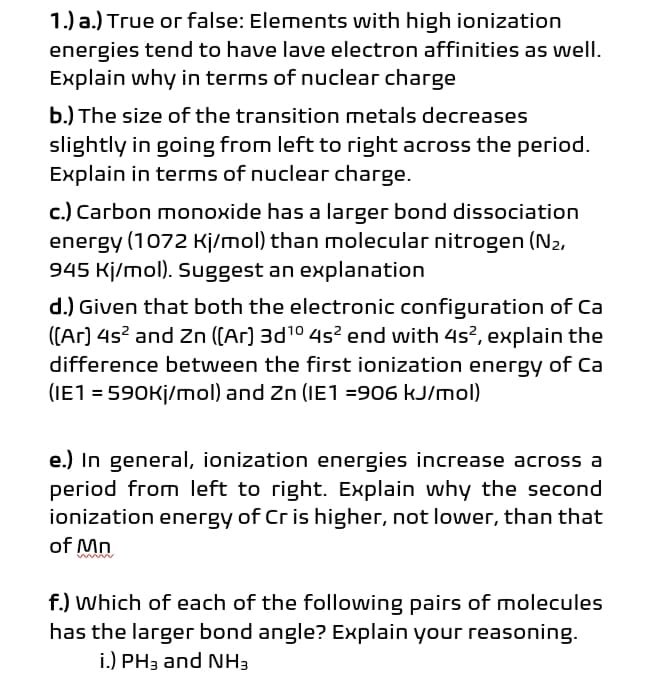1.) a.) True or false: Elements with high ionization energies tend to have lave electron affinities as well. Explain why in terms of nuclear charge b.) The size of the transition metals decreases slightly in going from left to right across the period. Explain in terms of nuclear charge. c.) Carbon monoxide has a larger bond dissociation energy (1072 Kj/mol) than molecular nitrogen (N2, 945 Kj/mol). Suggest an explanation d.) Given that both the electronic configuration of Ca ([Ar] 4s2 and Zn ([Ar] 3d10 4s2 end with 4s2, explain the difference between the first ionization energy of Ca (IE1 = 590Kj/mol) and Zn (IE1 =906 kJ/mol) e.) In general, ionization energies increase across a period from left to right. Explain why the second ionization energy of Cr is higher, not lower, than that of Mn f.) Which of each of the following pairs of molecules has the larger bond angle? Explain your reasoning. i.) PH3 and NH3
1.) a.) True or false: Elements with high ionization energies tend to have lave
b.) The size of the
c.) Carbon monoxide has a larger
d.) Given that both the electronic configuration of Ca ([Ar] 4s2 and Zn ([Ar] 3d10 4s2 end with 4s2, explain the difference between the first ionization energy of Ca (IE1 = 590Kj/mol) and Zn (IE1 =906 kJ/mol)
e.) In general, ionization energies increase across a period from left to right. Explain why the second ionization energy of Cr is higher, not lower, than that of Mn
f.) Which of each of the following pairs of molecules has the larger bond angle? Explain your reasoning.
i.) PH3 and NH3

Trending now
This is a popular solution!
Step by step
Solved in 2 steps with 2 images









